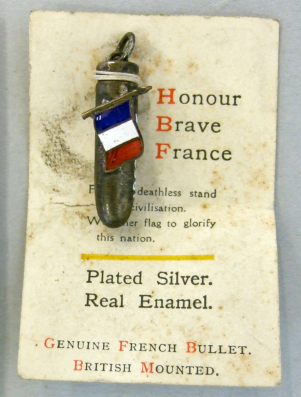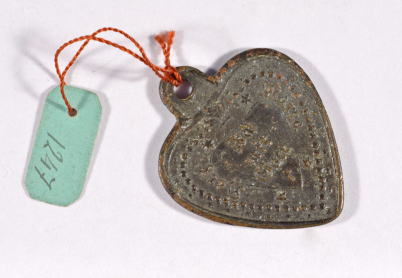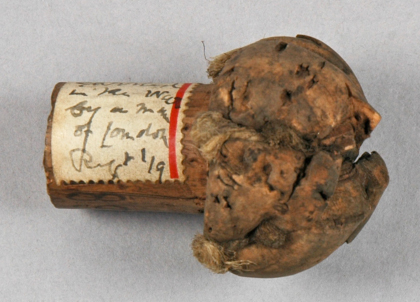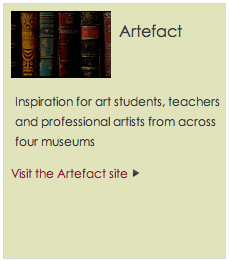Amulet Trail: Bullet charm, England or France
 PRM 1952.5.35
PRM 1952.5.35
This charm was probably made in England at the end of the First World War. The French flag and sentiment reflect support for France, an Allied nation that had seen enormous devastation and sustained some of the heaviest casualties. French bullets tended to be jacketed with copper or brass so this steel-cased bullet may be German. Its round-nosed design dates its manufacture to before 1910.
Amulets, mascots and souvenirs are common features of war. These small and portable objects were particular sources of comfort, strength, and faith for soldiers experiencing the new horrors of mechanized war in 1914-1918. As the historian Paul Fussel writes, "no front-line soldier or officer was without his amulet and every tunic pocket became a reliquary... so urgent was the need that no talisman was too absurd." Some were personal, fashioned from whatever the soldier could find – an old cork, a bit of shrapnel – whilst others (especially religious ones) were mass-manufactured. The latter-day vogue for 'trench art' means that such items are highly collectible.

Metal heart pendant depicting the Sacred Heart. Inscription this side reads, 'Herz Maria, Ich mit Gott'. Found on a dead Prussian soldier at Montreuil, 1870. PRM 1985.52.650

Bottle cork, dated 1893. Written on it is "Mascot carried in the [Great] War by a man of London Regt '19". PRM 1985.51.205






